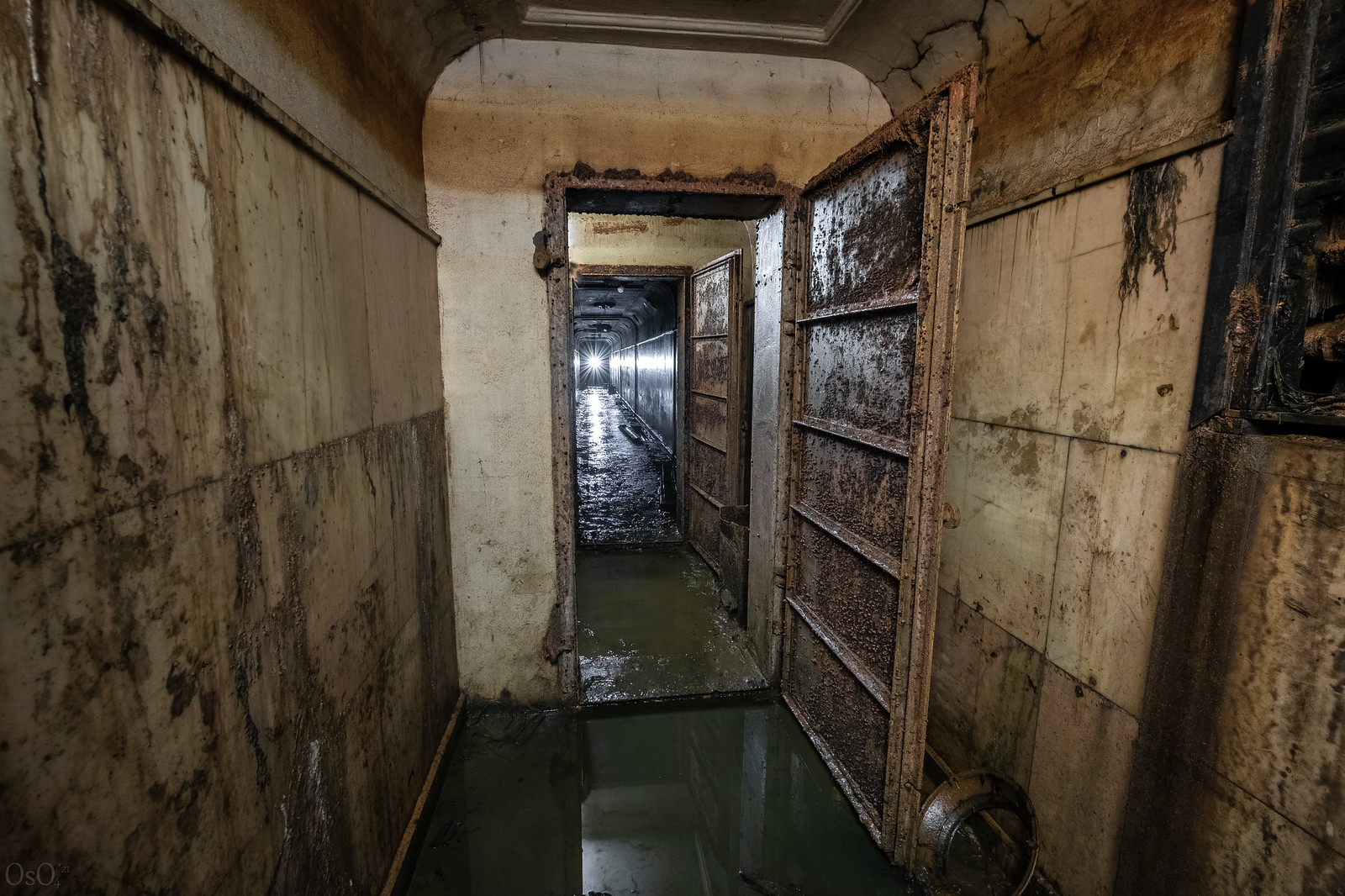What was hidden underwater will once again appear to curious enthusiasts.

For many years now, the former secret object No. 31, the bomb shelter of Stalin's dacha in Lipki, has stood submerged. That's why a team of urban explorers rented a gasoline generator and powered the pump they already had.
Pumping out the object to the minimum possible amount of water on the floor took almost 100 hours. Unfortunately, the thresholds in the doorways and the drainage grooves, which had been clogged for years, prevented the water from flowing out completely. That is why there were 5-10 centimeters of water in a part of the object. But the rooms with generator, control room, and ventilation were drained completely.
In total, 2600 cubic meters of water were pumped out including the water pumped out to remain the bunker unflooded for two days.
This is what the facility with the surrounding area looks like. Many thanks to Kreazot for the great plan.

The main entrance is a 100-meter corridor. Here the elevator comes in from the main building. After this building was given to the medical center, the elevator shaft was blocked at the first-floor level, and this entrance was no longer functional. However, it is still possible to connect the building to the bunker, just by overcoming a concrete block.

Elevator button.

The corridor is blocked by a kind of hermetic door with an unusual locking mechanism.

To close it, you have to tighten the captive bolt nuts, and it can only be done from the outside. This was probably an additional security measure to prevent access to the main house from the inside of the bunker. That is, the normal position of this door is closed on the pulling mechanisms. This theory is confirmed by the fact that it does not count as an anti-explosive hermetic door, and there are real hermetic doors at the entrance to the facility itself further along the corridor.

The corridor has smooth arches and is lined with marble.

Half a century ago, Stalin walked along this very corridor, when he checked the newly built bunker. It is difficult to express the feeling when you realize that in this very place, along this very corridor, such a significant historical figure passed through. And now you're here many years later.

The main entrance. We start counting the types of hermetic doors. The first was near the elevator, the second is here.


When the bunker was becoming abandoned, before it was completely flooded, the walls were overgrown with either mold or plant roots.

It looks very mysterious.

Unfortunately, little of the interior has been preserved. Maybe it was taken out after the building above was turned into the medical center or in the 90s when the security services lost their interest.

Even Stalin's office does not differ from the rest of the rooms. It's possible to identify it only by a personal bathroom.



Switchboards.

The second entrance goes from the staff building, which served the main house (look at the plan diagram).

This exit is not as beautiful as Stalin's, but it does not make it less majestic. The rust mixed with oil film on the tile. Magical.

We move to the technical part of the facility. The sump from which the water was pumped out. As you can see, here the hermetic doors are made of wood. The sump is closed by a hatch. The third and fourth types.

The walkway towards the emergency exit. This way we were pumping the bunker out, draining water directly into the lake. There will be another wooden hermetic door at the end.

The cargo walkway has the shortest length. At the time the bunker was built (and probably before reconstruction) it had a small railroad. It also had a shaft with an elevator. The plan shows a cabin next to the service building. The hermetic door here is similar to the modern ones. Five.

Let's go back and look at the filter ventilation units.



The doorway to the generator room is blocked by a door on a door. When the bunker was built, a large opening was used so that it was possible to bring in large-sized parts of the generator. After the installation, the opening was sealed with a non-open hermetic plate, into which a regular hermetic door was inserted. Such a strange hermetic door can be recorded as the sixth type.

Large low-speed ship diesel engine. It should have been enough for the facility.

Too bad it didn't survive to this day in its best condition.

Behind the door was the control room.

Meanwhile, the pump began pumping out the sump itself.


The diver table migrated into the hole in the disc.


The ribs of the diesel whale.

Well, I showed you all the photos I took there. Four hours of photo shooting passed quickly.
At the time of publication of this post, the Lipki bunker is flooded again. The groundwater concealed Stalin's secrets, and it is no longer possible to look at them with our own eyes.

Until we meet again!

No comments:
Post a Comment